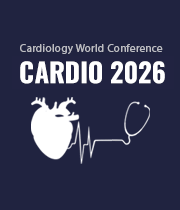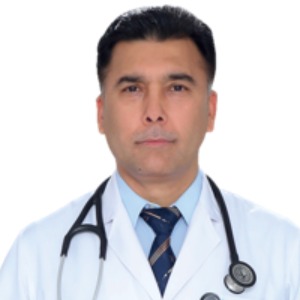Title : The hidden burden of congenital heart disease in Afghanistan: A three-year analysis of clinical patterns and healthcare access barriers
Abstract:
Background: Congenital Heart Disease (CHD) is the most common type of birth defect and the leading cause of infant mortality related to congenital anomalies worldwide. Despite the high burden of CHD in Afghanistan, epidemiological data from the country remain extremely limited. This study aimed to characterize the spectrum of CHD in Afghanistan and discuss systemic barriers to timely diagnosis and management. The findings are intended to provide insights that can guide future research, enhance early detection efforts, and inform the development of evidence-based clinical strategies.
Methods: A retrospective observational study was conducted at Ariana Medical Complex, reviewing medical records of patients diagnosed with CHD between March 2022 and December 2024. The analysis included a total of 4,830 echocardiographically confirmed patients of CHD. Data were extracted on patient age, gender, and CHD subtypes. CHD lesions were identified based on the type of defect. Cases were further categorized as Acyanotic and Cyanotic, with Cyanotic CHD defined as complex structural abnormalities of the heart present from birth, characterized by inadequate oxygenation of systemic blood due to right-to-left shunting or impaired pulmonary circulation, and generally necessitating staged surgical correction or palliative interventions to ensure survival and improve long-term outcomes. Descriptive statistical methods were used to analyze patterns in disease distribution, and potential gaps in timely diagnosis and care were highlighted based on professional experience and observation.
Results: Of the total cases, 54.4% were male (male-to-female ratio 1.2:1). CHD was most frequently diagnosed after infancy (58%); however, 27.6% of acyanotic and 24.4% of cyanotic cases were identified after the age of five, and 7.3% of cyanotic and 8.1% of acyanotic cases were diagnosed after age eighteen. Acyanotic CHDs accounted for 73.6% of cases, with ASD (28.5%), VSD (25.6%), and PFO (17.4%) comprising nearly two-thirds of the cohort. Patent ductus arteriosus (9.4%) and less common anomalies, including pulmonary hypertension, bicuspid aortic valve, and coarctation of the aorta, were also reported. Cyanotic CHDs accounted for 26.3% of cases, with the most frequent diagnoses being TOF (5.5%), dextro-transposition of the great arteries (D-TGA, 2.6%), complete atrioventricular canal defect (2.5%), and double outlet right ventricle (1.7%). Rare but clinically significant lesions included truncus arteriosus, total anomalous pulmonary venous connection, hypoplastic left or right heart syndrome, and Ebstein’s anomaly. Overall, 18.3% of cyanotic cases presented with multiple defects, whereas among acyanotic cases, 54.3% occurred as isolated lesions and 45.6% were associated with additional acyanotic defects. Additionally, approximately 13.1% of primarily acyanotic CHDs, when diagnosed late, presented clinically as cyanotic CHDs. Significant barriers included limited diagnostic capacity, a shortage of specialized workforce, financial constraints, and the lack of in-country surgical services, collectively constituting a public health emergency.
Conclusion: This study provides a foundational overview of the CHD spectrum in Afghanistan, demonstrating a predominance of acyanotic lesions alongside a significant burden of cyanotic cases with delayed diagnosis. Beyond the descriptive findings, professional insights underscore critical systemic challenges, including limited specialist availability, the lack of in-country pediatric cardiac surgical capacity, significant access barriers, and economic constraints that continue to impede timely diagnosis and optimal care. Addressing these issues requires not only investment in local diagnostic and treatment infrastructure but also active collaboration with international cardiology associations and healthcare institutions. Strengthened global partnerships can support capacity-building, training, and sustainable care models to improve outcomes for children with CHD in Afghanistan.
Keywords: Congenital Heart Disease, Afghanistan, Diagnostic Delay, Healthcare Barriers, Acyanotic CHDS, Cyanotic CHDS, Resource-Limited Settings, Pediatric Cardiology.



